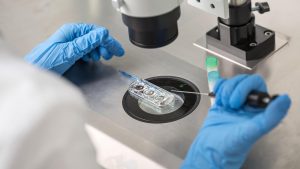Research has previously shown that it isn’t simply a matter of the strongest sperm making it to the “finishing line” that ultimately results in a healthy baby. However it’s a lot more complicated than most people believe.
When you factor in sperm quality, egg quality, embryo quality, age, endometrial receptiveness, multiple signalling pathways and hormone responses to name a few, the process becomes a very daunting experience for patients embarking on their own fertility journey. As scientists, we dedicate our lives and our careers to research that will help patients achieve their dream of starting a family.
New research has helped us learn that various chemicals that occur naturally in the female reproductive tract may actually improve or impair the sperm’s chance for reaching the egg.
Scientists from the University of Eastern Finland have discovered that the female reproductive tract has the ability to mediate a “post-mating sexual selection” towards some sperm.
The scientists studied the cervical mucous of females and found that there was a stronger effect on sperm from some males, and that the sperm that was more dissimilar genetically from the egg had an increased chance of fertilisation. Dr Jukka Kekäläinen, an Associate Professor in the Department of Environmental and Biological Sciences found that the results indicated that there is an immunogenetic capability when it comes to reproductive partners, the combination of both sperm and egg may be a highly selective process.0
“It is likely that gamete-level incompatibility can reduce the chance of conception but may not often completely prevent it,” Kekäläinen said. “Furthermore, gamete-level compatibility does not mean that partners are otherwise incompatible, with respect to their personalities.”
What does this mean for patients undergoing fertility?
This new research will help to improve our current understanding we have of undiagnosed infertility in many couples. Approximately 30% of patients experiencing infertility will struggle to find a diagnosis, which can be frustrating and discouraging. By improving our understanding of this area of infertility, it may help researchers and clinics to develop more personalised and accurate diagnoses.






